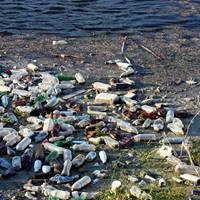(BRUSSELS) – The EU’s Circular Economy action plan, launched Wednesday by the European Commission, outlines measures to reduce waste along the entire life cycle of products we produce, consume and dispose of.
A circular economy is estimated to offer net positive benefits in terms of GDP growth and job creation, increasing the EU’s GDP by an additional 0.5% by 2030 creating around 700,000 new jobs.
The new Plan focuses on the design and production for a circular economy, with the aim to ensure that the resources used are kept in the EU economy for as long as possible.
“The new Plan will make circularity the mainstream in our lives and speed up the green transition of our economy,” said Environment Commissioner Virginijus Sinkeviciu: “We offer decisive action to change the top of the sustainability chain product design. Future-oriented actions will create business and job opportunities, give new rights to European consumers, harness innovation and digitalisation and, just like nature, make sure that nothing is wasted.”
The transition towards a circular economy is already under way, says the Commission, with frontrunner businesses, consumers and public authorities in Europe embracing this sustainable model. The Commission will make sure that the circular economy transition delivers opportunities for all, leaving no one behind. The Circular Economy Action Plan put forward today as part of the EU Industrial Strategy presents measures to:
- Make sustainable products the norm in the EU. The Commission will propose legislation on Sustainable Product Policy, to ensure that products placed on the EU market are designed to last longer, are easier to reuse, repair and recycle, and incorporate as much as possible recycled material instead of primary raw material. Single-use will be restricted, premature obsolescence tackled and the destruction of unsold durable goods banned.
- Empower consumers. Consumers will have access to reliable information on issues such as the repairability and durability of products to help them make environmentally sustainable choices. Consumers will benefit from a true ‘Right to Repair’.
- Focus on the sectors that use the most resources and where the potential for circularity is high. The Commission will launch concrete actions on:
- electronics and ICT a ‘Circular Electronics Initiative’ to have longer product lifetimes, and improve the collection and treatment of waste
- batteries and vehicles new regulatory framework for batteries for enhancing the sustainability and boosting the circular potential of batteries
- packaging new mandatory requirements on what is allowed on the EU market, including the reduction of (over)packaging
- plastics new mandatory requirements for recycled content and special attention on microplastics as well as biobased and biodegradable plastics
- textiles a new EU Strategy for Textiles to strengthen competitiveness and innovation in the sector and boost the EU market for textile reuse
- construction and buildings a comprehensive Strategy for a Sustainably Built Environment promoting circularity principles for buildings
- food new legislative initiative on reuse to substitute single-use packaging, tableware and cutlery by reusable products in food services
- Ensure less waste. The focus will be on avoiding waste altogether and transforming it into high-quality secondary resources that benefit from a well-functioning market for secondary raw materials. The Commission will explore setting an EU-wide, harmonised model for the separate collection of waste and labelling.The Action Plan also puts forward a series of actions to minimise EU exports of waste and tackle illegal shipments.
Circular Economy Action Plan - background guide


